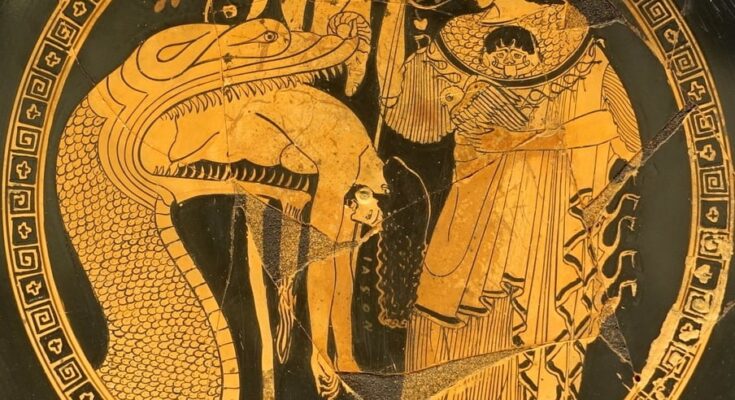
The legend of Jason and the Argonauts is one of the most famous quest stories in Greek mythology. It is the tale of Jason and his band of sailors travelling to a distant land to obtain the Golden Fleece. Is there any evidence that this legend of Jason and the Argonauts was based on real events?
What is the legend of Jason and the Argonauts?
First, let us examine what the legend claims. According to the ancient Greeks, Jason was a prince of the Greek city of Iolcus. King Pelias wanted Jason dead, so he sent him on a quest that he expected would be impossible.
The quest was to obtain the Golden Fleece. This was a magical ram’s fleece that was held at Colchis. Colchis was a kingdom on the eastern shore of the Black Sea, far from Greece. This lengthy journey took Jason and the Argonauts past numerous dangerous places and situations.
At the end of the journey, in the land of Colchis, Jason and his men find that there is a dragon guarding the Golden Fleece, with the fleece itself in a sacred grove.
The historical context of the legend
Now that we have seen the basic outline of the legend, what do we know about the historical context of it? For example, when was this supposed to have happened? Well, Greek mythological accounts claim that the sons of some of the Argonauts participated in the Trojan War.
This would mean that the voyage of Jason and the Argonauts should have occurred about a generation or so before the Trojan War. However, this helpful fact actually leads to some controversy. The very date of the Trojan War, placed at c. 1200 BCE since antiquity, has been brought forward by several centuries by multiple scholars.
According to the British Museum, for example, Homer’s Odyssey does not reflect the Bronze Age. Rather, it reflects the period around 800 BCE, when the Greeks began establishing towns and trading communities across much of the Mediterranean and the Black Sea.
The archaeology of the Black Sea
The Black Sea is particularly relevant for the story of Jason and the Argonauts. Since Jason was sent on a journey to Colchis to get the Golden Fleece, the implication is obviously that the Greeks already had a reasonable familiarity with the shores of the Black Sea by that time.
As highlighted by the aforementioned statement from the British Museum, this does not fit the period before 800 BCE. However, can we be more specific than that?
Archaeology shows that the earliest Greek artefacts from the shores of the Black Sea date from the mid or even early eighth century BCE. Literary records place the founding of Trapezus, modern-day Trabzon, in the eighth century BCE. This is not far from Colchis.
Although archaeology does not prove that the Greeks got as far as Colchis itself as early as the eighth century BCE, it does show that they were already active not too far away. Since the legend of Jason and the Argonauts does not present the Greeks as actually having a colony at Colchis, this is consistent with the historical reality of the eighth century BCE.
The worship of the ram
Another factor is that archaeology has revealed that the worship of the ram was very prevalent in ancient Colchis. The Svans, an ethnic group in the mountainous region of ancient Colchis, have a folk tale about a golden ram guarding a treasure in a cave.
Furthermore, Colchis was a massive producer of gold. A common method for collecting gold in that region was to place a sheep’s fleece in a stream and allow it to gather the particles of gold as the water flowed through it.
Given the use of this method for collecting gold, along with the fact that the ram was a sacred animal to the people of ancient Colchis, the concept of the Golden Fleece fits in perfectly with the historical facts.
The dragon in the story of Jason and the Argonauts
What about the detail about the dragon guarding the Golden Fleece? This, again, ties in remarkably well with the historical facts. Archaeology has revealed that snakes were important to the ancient inhabitants of Colchis.
Recall that the Golden Fleece was said to have been guarded within a sacred grove. This is interesting in view of what archaeologists have found at Namcheduri, Western Georgia (ancient Colchis). Here, they have uncovered a sacred temple site. Within the temple, they have found numerous items with carvings of snakes.
Some of these artefacts dated to the eighth or seventh century BCE, when the legend appears to be set. One archaeologist who worked on the site said the following:
“We think that the ancient Colchians kept snakes inside their temples as guardians. Even up to recent times it was the custom to keep guardian snakes inside Georgian houses.”
In summary, while we cannot confirm the specific events in the legend of Jason and the Argonauts, all the basic elements of the legend are consistent with the historical facts.



